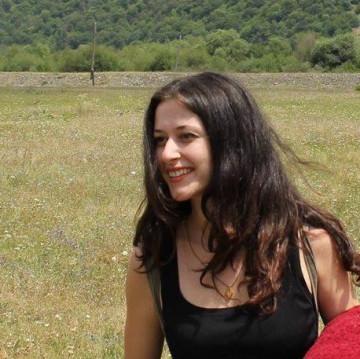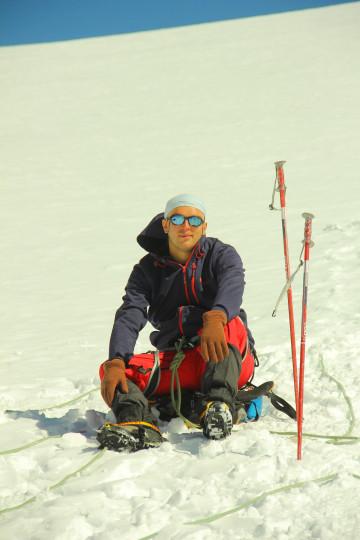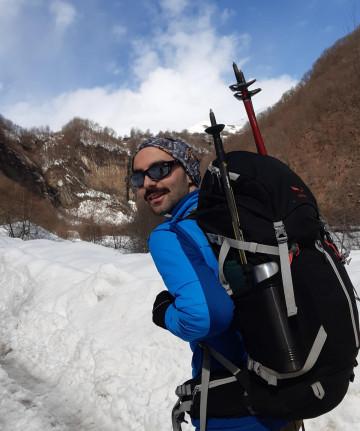
Help other travelers use your experience.
Review this destination, share your thoughts, impressions, pros and cons.
Let's make traveling easier than ever.
Zedazeni Monastery - one of the oldest monastery complexes, a monument of architecture, in the Mtskheta-Mtianeti region, northeast of Mtskheta, on the forest-covered Saguramo ridge, at 1170 meters above sea level.
According to legend, it was erected on the site of a pagan shrine. On the territory of the monastery there is an old basilica with annexes. On November 7, 2006, by the decree of the President of Georgia, it was awarded the category of a real cultural monument of national importance.
The buildings included in the complex are: the Church of St. John the Baptist, the fortress-wall and rooms carved into the rock. The mountain of Zedazeni is named after the idol that once stood here - Zadeni.
Today, Zedazeni and Saguramo forests are declared protected.
According to historical records, a fortress (not preserved) was built on Zedazeni at the beginning of the II century (in 109). In the middle of the VI century, a group of Georgian ecclesiastical figures (so-called Assyrian fathers) who returned to their homeland from Syria, the commander John chose a "mountain, near the east of Mtskheta and north of Svetitskhoveli, and he climbed a high mountain called Zeda (Upper) Zaden". Here "he found a small cave, build a church and settled there". After that he was named John Zedazneli. From here, John sent his disciples to work in different parts of Kartli and Kakheti, and he stayed with one of the disciples on Zedazeni. John died in 573. His disciples and associates first buried John's body in the monastery of Tata, but soon, according to the saint's will, "they took him to the place with great reverence, and buried John here, and later a church was built for him." John was buried in a chapel specially built for him. In the third quarter of the VIII century, the Catholicos Clementos built a three-nave basilica here and incorporated John's chapel into it as part of the north nave of the basilica. Then the monastery was built and improved.
Heavily damaged fragments of paintings are preserved in the church. The painting of the altar is divided into two registers. In the upper register the composition is almost completely washed down. It is difficult to distinguish part of John's head, part of the Savior's richly decorated throne, and footstool. The arch depicts imploration. In the second register are the reddish-brick contours of the church Fathers. The saints are represented frontally, with the whole body.
Zedazeni Fortress and monastery protected the territories of the Kingdom of Kakheti until the XI century. In 1101, David the Builder finally destroyed the army of the Turk-Seljuks and King Kvirike of Kakheti, who had taken refuge in the Zedazeni prison. He "took Zedazani fortress" from the king of Kakheti and handed it over to his fellow-warrior Nyania Bakuriani.
From 1479 there was a Zedgenidze-Guramishvili ancestral crypt in Zedazeni Monastery. In 1705 monastic life here was temporarily suspended. In the XVIII century the bell tower and the monk's residence Senaki were built. In the same century the church was rebuilt by the Catholicos Domenti. In the XIX century, under the leadership of Bishop Alexander Okropiridze, monastic life was revived, the church was covered with an "iron roof", the entrance to the western wall was cut, the exit from the altar to the sanctuary was arranged, and so on. The church was repaired in 1889 by Alexander, Bishop of Guria-Samegrelo. In 1915-1922 the monastery was ruined. In 1926-27, the fragments of the iconostasis of the X-XI centuries church were assembled by A. Olinkevich under the leadership of A. Chubinashvili (kept in the State Museum of Art).
According to legend, this mountain is named after the idol Zaden (a pagan deity of harvest and fertility), who was a hero worshiped by the people and died in battle. King Parnaob (112-99 BC) erected an idol on this mountain. This idol stood on this mountain until the first half of the IV century, when Georgia converted to Christianity.
The three-nave basilica of the Baptist, the gate-bell tower, the fence and other remains of the castle are still preserved from the monastic buildings. The middle nave of the square basilica is narrow and high. It has a semicircular apse to the east. The entrance is from the south (the western entrance is of late times). The south and north naves are connected to the main nave by brick arched exits. In the eastern part of the north nave there is a hall-type church built in VI-VII centuries, the rectangular apse of which is covered with a horseshoe-shaped concrete supported by conical trompe. The altar here is elevated by four steps. The stone coffin of John Zedazneli (it must have been made in the XVII century), "honest coffin," is one-third incised in the sanctuary. There is a water pool in the western part of the north boat. The south nave consists of two parts, the entrance to the church is from the main nave (formerly the entrance was from the west). The monument is built of cobblestones and rubble, partly of bricks. Gallstone is also found there. The facades are simple and plain, the windows are arranged asymmetrically. The main nave window is decorated with a "moistened" cross relief.
From the south, the church is surrounded by an XVIII century square gate covered with carved stone. The entrance is from the south. At the gate there is an octagonal arbour of the bell tower built of bricks, opened with four-sided arched windows.
The castle-fence dates back to the XVII century (some parts belong to the developed feudal era). It is built of cobblestone. Carved blocks and bricks are also used. Currently severely damaged. The fortress encloses the church from three sides (there is an inaccessible steep cliff to the south).
Semicircular piers are attached to the fence, almost equally spaced from each other. To the east of the fence are the ruins of a citadel. The entrance to the citadel is from the west. The inner courtyard is quite high compared to the churchyard, with traces of buildings can be seen in its north-eastern section.
Huts are located on a steep mountain slope, southeast of the Baptist Church, dating back to feudal times. You can reach huts by narrow paths.
Our guides are ready to help you on this trip



Buy our tours online and explore incredible Georgia!

Help other travelers use your experience.
Review this destination, share your thoughts, impressions, pros and cons.
Let's make traveling easier than ever.
Please login to ask a question
Ask a Question"VI საუკუნის შუა წლებში სირიიდან სამშობლოში დაბრუნებულმა ქართველთა საეკლესიო მოღვაწეთა ჯგუფის, ე.წ. ასურელი მამების, მეთაურმა იოანემ შეარჩია" - აი, ეს საიდან მოიტანეთ?
მოგესალმებით, ისტორიული გადმოცემით ასეა. ასევე ეს ინფორმაცია დევს saunje.ge და dzeglebi.ge საიტებზე .
გირჩევთ უფრო კომპეტენტური წყაროები მოიძიოთ და გადაამოწმოთ, ან უბრალოდ თავიდან დასერჩოთ.
თუ შეიძლება იქნებ მიგვითითოთ კონკრეტულად რა არის არასწორი და აუცილებლად გავასწორებთ.
მადლობა ინფორმაციისთვის
მე როგორც ვხვდები "სირიიდან სამშობლოში დაბრუნებულს" გულისხმობთ. რადგან 13 ასურელი მამა ეროვნებით ქართველები არ ყოფილან. კიდევ სხვა რამესაც ხომ არ გულისხმობთ?